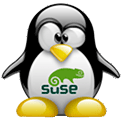NAME
smp_conf_route_info - invoke CONFIGURE ROUTE INFORMATION SMP function
SYNOPSIS
smp_conf_route_info [--disable] [--expected=EX] [--help] [--hex] [--index=IN] [--interface=PARAMS] [--phy=ID] [--raw] [--routed=R_SAS_ADDR] [--sa=SAS_ADDR] [--verbose] [--version] SMP_DEVICE[,N]
DESCRIPTION
Sends a SAS Management Protocol (SMP) CONFIGURE ROUTE INFORMATION request function to a SMP target. The SMP target is identified by the SMP_DEVICE and the --sa=SAS_ADDR. Depending on the interface, the SAS_ADDR may be deduced from the SMP_DEVICE. With one interface there is one SMP_DEVICE per machine so the SMP_DEVICE,N syntax is needed to differentiate between HBAs if there are multiple present.
Each phy in a SAS expander that has an associated routing attribute of "table" has a router table. The number of rows (or entries) in each router table is given by the "expander route indexes" field in the response of the REPORT GENERAL function.
OPTIONS
Mandatory arguments to long options are mandatory for short options as well.
| -d, --disable | |
| set the "disable expander route entry" flag in a row of the router table associated with --phy=ID of the given SMP target (e.g. an expander). Within the router table the row that is disabled is identified by the expander route index given by --index=IN. | |
| -E, --expected=EX | |
| set the ’expected expander change count’ field in the SMP request. The value EX is from 0 to 65535 inclusive with 0 being the default value. When EX is greater than zero then if the value doesn’t match the expander change count of the SMP target (i.e. the expander) when the request arrives then the target ignores the request and sets a function result of "invalid expander change count" in the response. | |
| -h, --help | output the usage message then exit. |
| -H, --hex | output the response in hexadecimal. |
| -i, --index=IN | |
| expander route index. IN is a value between 0 and 65535. Default is 0. More precisely the maximum index value is (expander_route_indexes - 1). | |
| -I, --interface=PARAMS | |
| interface specific parameters. In this case "interface" refers to the path through the operating system to the SMP initiator. See the smp_utils man page for more information. | |
| -p, --phy=ID | |
| phy identifier. ID is a value between 0 and 127. Default is 0. | |
| -r, --raw | send the response to stdout in binary. All error messages are sent to stderr. |
| -R, --routed=R_SAS_ADDR | |
| specifies the SAS address to be placed in a row (given by --index=IN) of the router table associated with --phy=ID. Default value is 0. The R_SAS_ADDR is in decimal but most SAS addresses are given in hexadecimal. To give a number in hexadecimal either prefix it with ’0x’ or put a trailing ’h’ on it. | |
| -s, --sa=SAS_ADDR | |
| specifies the SAS address of the SMP target device. Typically this is an expander. This option may not be needed if the SMP_DEVICE has the target’s SAS address within it. The SAS_ADDR is in decimal but most SAS addresses are shown in hexadecimal. To give a number in hexadecimal either prefix it with ’0x’ or put a trailing ’h’ on it. | |
| -v, --verbose | |
| increase the verbosity of the output. Can be used multiple times | |
| -V, --version | |
| print the version string and then exit. | |
CONFORMING TO
The SMP CONFIGURE ROUTE INFORMATION function was introduced in SAS-1 . The "Expander change count" field was added in SAS-2 .
AUTHORS
Written by Douglas Gilbert.
REPORTING BUGS
Report bugs to <dgilbert at interlog dot com>.
COPYRIGHT
Copyright © 2006-2008 Douglas Gilbert This software is distributed under a FreeBSD license. There is NO warranty; not even for MERCHANTABILITY or FITNESS FOR A PARTICULAR PURPOSE.
SEE ALSO
smp_utils, smp_rep_general(smp_utils), smp_rep_route_info(smp_utils)
